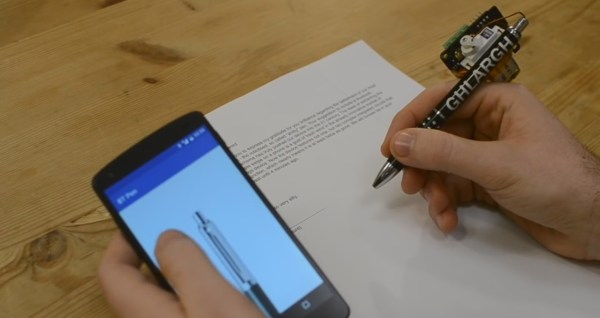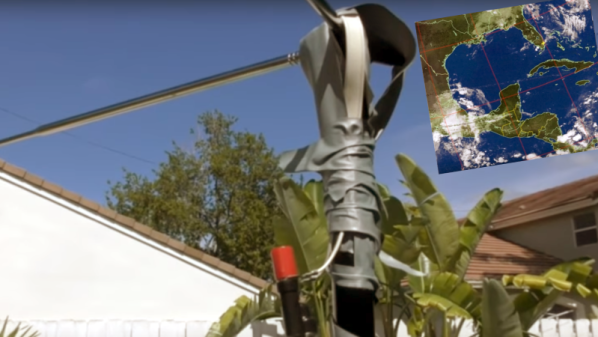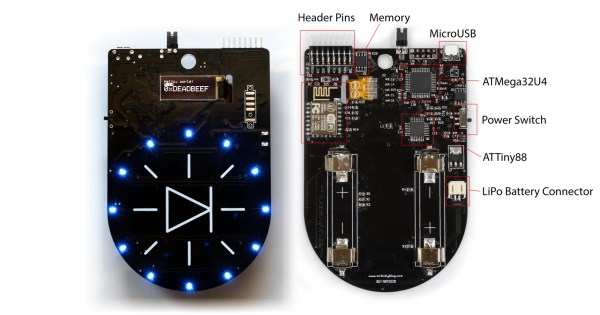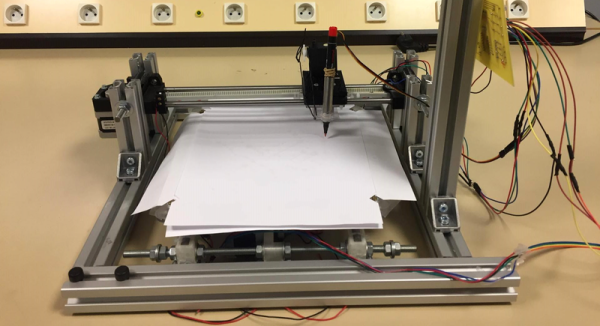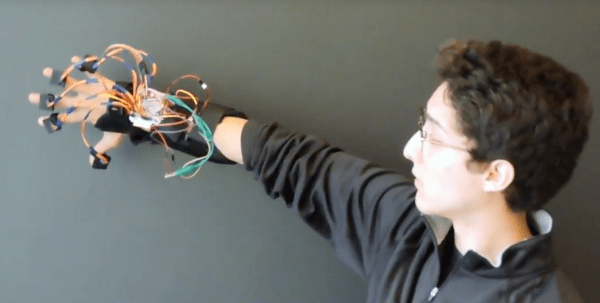“Ugh. You mean I have to press down on the pen’s button to open it? Gross.” In this day-and-age when we can swipe on our phones and do voice recognition, there seems no reason we should have to press a button. How antiquated. So [Marek Baczynski] modernized his pen for swiping and voice control. It’s also sure to get all the kids back to working on their penmanship.
Seriously though, not all hacks have to be serious. [Marek] and [Ghlargh] added a servo to activate the button, and then [Marek] added Bluetooth to control the servo. After writing a phone app, he was able to swipe down to open it and down again to close it. Then, after some prompting from Redditers he added voice control from his laptop. We think he could have done a more professional job with the way he attached the pen to the laptop, perhaps he could have 3D printed something instead of just using tape, or maybe made something using CNC or a laser cutter. An important hack such as this deserves as much. Now he need only say “Computer. Open pen.” and the tedious task is taken care of. Seeing is believing so check it out in the video below.

